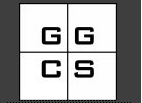A Gittler Guitar is an experimental designed guitar created by Allan Gittler (1928–2003). Gittler felt that sentimental design references to acoustic guitars are unnecessary in an electronically amplified guitar, and designed his instrument with the objective of reducing the electric guitar to the most minimal functional form possible.
He made 60 guitars (Type I) in New York in the mid 1970s to early 1980s, these where crafted by Bob Kretchmer, one of these was sold to Andy Summers, which he plays in The Police's "Synchronicity II" video.
In 1982, Gittler emigrated to Israel, settled in Hebron, changed his name to Avraham Bar Rashi and formed a partnership to make and market the Gittler guitars.
The N. 61 - 68 were produced by Julius Benistri, who had a shop in Jerusalem: these 8 guitars were made out of a particularly high-grade steel and had a slight gold cast to the color, also it seems that they also had a strap holder attached.
After that, he licensed the design to a local company in Kiryat Bialik called Astron Engineer Enterprises LTD. They computer machined around 300, from sn 69 to 305 (that is the highest known serial).
Bar Rashi commented later to the effect that he was unhappy with the manufacturing.
Astron, however, claims that their instruments are precisely manufactured copies of the original construction, and that the addition of an epoxy body containing electronics for simplified handling, while arguably compromising the minimalism of the original idea, had no influence on the sound or the style of playing.
We can confirm that the frets are accurately placed also in Astron series but it's minimalism concept was compromised a bit.
The first 68 are sometimes described as the Fishbone Gittler guitar. Three Gittler basses also exist, made in New York and numbered 1, 2, and 3, respectively.
The Gittler guitar has 6 strings. Each string has its own pickup.
The first Astron prototypes (Type II) had a black metallic mini body with steel tubes to hold the strap in a more conventional way, the serials known for this mini body models are N. 82 and N. 90. Very likely N.69 to at last N.90 where made in this way, but it's not possible to find information until now: what we can say is that these versions are very closer to minimalist concept of Allan, except for the strap holder solution, that is too invasive on the full aspect of the guitar.
Later versions (Type III) have an epoxy body. These versions are of two types: with or without the epoxy neck.
In all models the steel frets, consisting of stainless steel bars pressure fitted into the stainless steel neck, give the instrument a sitar-like feel, as it is possible to bend the strings downward past where a wooden fretboard would prohibit the movement in a conventional guitar.
The six individual pickups can be routed to divided outputs via D-sub-9-pin. or be mixed to a 1/4" RS connector. The built in pre-amps are powered by a 9 V battery or via D-sub connector.
The strap holder is much more in accordance with the look of this model and it's made of a 30x41x2 mm aluminum flat bar placed in diagonal and it can be reversed so this is the first model version playable by sitting.
The New York version came without a pre-amp section; the individual pickups' signals were led into single cables, which could then be plugged into a mixing box or each separately amplified.
The Museum of Modern Art, MOMA has one instrument in its collection, as does the Boston Museum of Fine Arts (which also has a later Bar Rashi wooden electric guitar). Gittler guitars can also be seen in several other museums and collections.
In 2012 Avraham Bar Rashi's son Yonatan has founded togheter with Russ Rubman ( President of Alloy International) a new company to produce an updated version of the original Gittler Guitar. This model will be available after Namm 2013 . Reservation is already started at www.gittlerinstruments.com
| 


